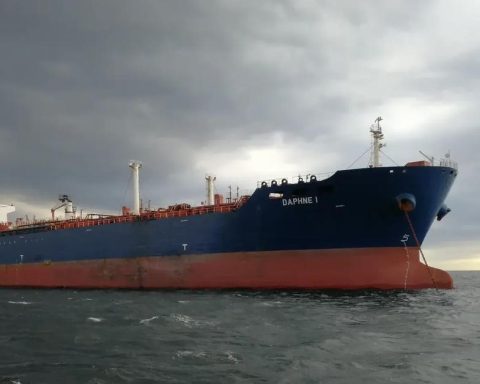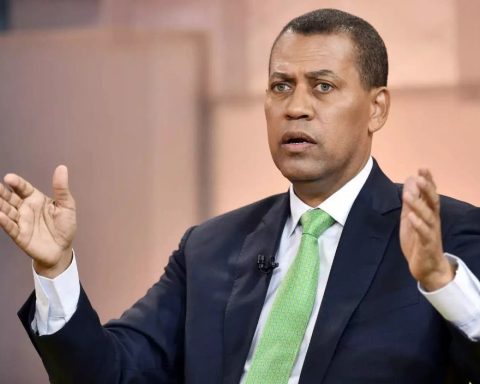The energy drama in Cuba has reached such a level that the president himself, Miguel Díaz-Canel, intervened through a televised video to admit the seriousness of the situation and warn that “it is still complex in the coming days.” He then added that things should get better at the end of May to the stunned audience that can’t keep up with the dates.
The video corresponded to an intervention by the president before the Council of Ministers and served to start a Round Table in which other participants offered data that make fear the worst. One of the most revealing was given by Edier Guzmán Pacheco, director of Generation of the National Electric Union, who said that of the 20 blocks of thermoelectric plants in the country, eight are outside the system and the remaining 12 generate 1,023 MW, just 39 % of the total power of these plants (2,608 MW).
“The availability of these thermal units is, at the moment, below 50%. A similar situation is presented by distributed generation, fuel and diesel engines, which are also below 50% in their availability,” he added. .
“The availability of these thermal units is currently below 50%. A similar situation is presented by distributed generation, fuel and diesel engines, which are also below 50%”
“Every two days we have almost three blocks out of service,” Guzmán Pacheco said candidly.
The official explained that the Island has an installed generation of 6,499 MW, of which 1,418 MW are in diesel engines and 2,473 MW are in Energás, hydroelectric, fuel generation engines, and renewables, in addition to the 2,608 MW of thermoelectric plants.
All the energy obtained with crude oil engines and its derivatives is experiencing a vertiginous rise in price, as a result of the rise in fuel prices due to the inflationary context and the Russian invasion of Ukraine. “A barrel of fuel is above 110 dollars, when months ago it was between 50 and 60. The price has doubled. Added to this is the fact that Cuba has to pay 30% above the price on the international market, one of the the direct effects of the blockade,” the official said on one of the many occasions on which US sanctions policy came to the fore. In conclusion, the electrical support energy is greatly reduced, despite the shipments of fuel by Venezuela at a friendly price.
But the serious structural problem is with the plants. The Minister of Energy and Mines, Liván Arronte Cruz, like Guzmán Pacheco, detailed a panorama that was no less dramatic because it was already known. The thermal blocks have been in operation for between 35 and 40 years, an excessive time and whose situation is complicated by the lack of maintenance. “This causes, for example, that units that have an installed power of 90 megawatts (MW) only work with 50 or 60 MW,” described Arronte, who estimated maintenance costs alone at 250 million dollars a year.
The reality is very different: Cuba has no reserves and the demand is above the generation capacity
The minister indicated that the energy system needs to have 500 MW in reserve in case any contingency occurs that causes the exit of a block due to breakdowns, a fire or a lightning strike, just to give a few recent examples. The reality is very different: Cuba has no reserves and the demand is above the generation capacity.
Guzmán Pacheco said that the oldest of the Cuban thermoelectric units is 50 years old. When one of them reaches 200,000 hours of operation, it is considered very old and unable to generate at full capacity. Well, in Cuba there are 13 units in that situation, which means that more than half of the blocks are depleted.
Also, those units need partial and light maintenance cycles. 18 of the 20 blocks have surpassed that situation and, even worse, 16 are out of the capital maintenance cycle that is carried out every five years, and whose cost is almost 100 million dollars.
To exemplify what it means not to provide this care, the specialist said that Felton block 1, which was synchronized in July 2021, has not been able to do the first light maintenance and its generation capacity has already gone from 170 MW to 90 MW. Despite everything, last year there were 60 operations of this type, thanks to which electricity can hardly survive.
“No one can blame the plant workers for problems that are outside their scope. What the owner of the plants, the communist state, has to do is invest, and as soon as possible”
The official was prolific in details about these jobs and tried to convey the feeling that the greatest effort is being made to make the summer bearable, with more than 4,000 employees doing everything on their part, but the problem is more complex.
“No one can blame the plant workers for problems that are outside their scope. What the owner of the plants, the communist state, has to do is invest, and as soon as possible, to make up for lost time,” he said. demanded this Thursday by the Cuban economist residing in Spain Elías Amor, who in a post from your blog, Cubaeconomyaccuses the Government of giving everything in huge tourist investments while letting the power stations of the Soviet era rot.
Although the video of Díaz-Canel with which the program started tried to convey that the energy problem has the highest priority, the speech was very political and not very informative. The president did not miss the opportunity to repeatedly accuse the United States, going so far as to say that the lack of electricity shows “how perverse the blockade policy is and how much double standards there are in the United States government, when on the one hand it says that it will everything possible so that the Cuban people have better chances of life and on the other maintains the sanctions that affect the population and the economy”.
The president asked the population to use energy rationally, both in their homes and in workplaces to those who have the authority to do so, before ending with the confusing message of a month of May that seems to have, on its calendar, more days than in the rest.
________________________
Collaborate with our work:
The team of 14ymedio is committed to doing serious journalism that reflects the reality of deep Cuba. Thank you for joining us on this long road. We invite you to continue supporting us, but this time becoming a member of our newspaper. Together we can continue transforming journalism in Cuba.


















